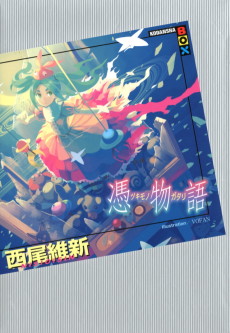KOYOMIMONOGATARI
STATUS
COMPLETE
VOLUMES
1
RELEASE
May 20, 2013
CHAPTERS
62
DESCRIPTION
Calendar Tale, narrated by our titular hero, sends us to various earlier points in the story where certain events had yet to occur—when, for instance, the shady “expert” Oshino was still in town, and the ex-legendary vampire Shinobu hadn’t tired of sulking in a corner. After revisiting with a “case files” feel of the series’ origins, we will start to catch up to the present moment until we are violently spliced back into the overarching plot.
Weaving in a motif of ways, paths, roads, and streets—walks of life—the nostalgic vignettes hark back to the “case files” feel of the series-launching Monster Tale, but with a twist. Not all oddities are supernatural: stones and flowers; sand and water; the wind and the tree can just be plain weird without being aberrations. The vignettes for the months of October to March deal with six ladies who are either not quite human or older than titular narrator Koyomi Araragi, bless his bantering soul.
In this instalment, say hello from the future to class president among class presidents Hanekawa, acid-tongued girlfriend Senjogahara, cheeky lost child Hachikuji, smutty athlete Kanbaru, pathologically shy Sengoku, and justice-loving martial artist Karen, young ladies who love to make our young man sweat. See how he handles—or is handled by—aberration of a little sister Tsukihi, enigma of a freshman or -woman Ougi, shadow of a legendary vampire Shinobu, corpse of a tween girl Ononoki, psychopath of a monster expert Kagenui, and know-it-all of a Machiavellian fixer Izuko Gaen.
(Source: Kodansha USA, edited)
Note: The English release was split across two volumes, instead of the original singular volume.
CAST
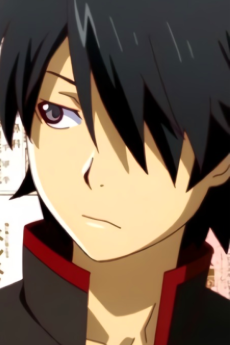
Koyomi Araragi

Hitagi Senjougahara

Shinobu Oshino
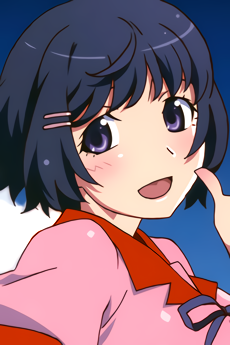
Tsubasa Hanekawa

Mayoi Hachikuji

Nadeko Sengoku
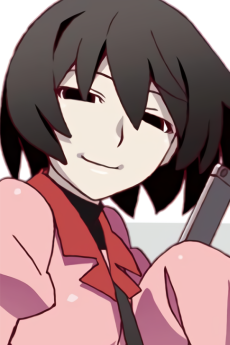
Ougi Oshino
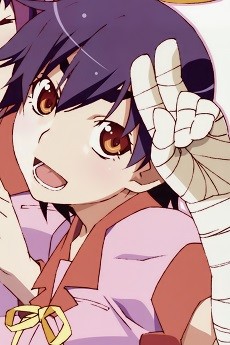
Suruga Kanbaru

Yotsugi Ononoki

Meme Oshino

Karen Araragi

Tsukihi Araragi

Izuko Gaen
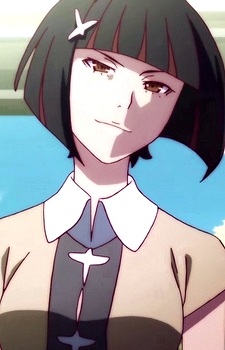
Yozuru Kagenui
CHAPTERS
RELATED TO KOYOMIMONOGATARI
REVIEWS

inspirashamul
100/100The road that connects the first entry Bakemonogatari to the last entry OwarimonogatariContinue on AniListWhat surprised me more than anything was the afterword on this collection of short stories. As this one inserted itself into the narrative just as this one inserted itself as a 10/10 reaches the heights of Bakemonogatari, Nekomonogatari (Shiro), and Koimonogatari which all hold that eclectic 10/10 in my scoring system but it doesn't get it for the same reasons as Tsubasa Tiger or Hitagi End. Bakemonogatari is the best introduction arcs/entries I've ever seen and both the anime and LN are the best ever. What makes Koyomimonogatari hold its weight into the same level as these other ones when I barely remembered it from my anime binge of Final Season at the beginning of this year? It's simple. It holds the core of Monogatari and lays it all on a road for us to reexperience or recapture the journey from a different perspective. And that's the important part because usual recaps are boring af.
Anyone who has been reading this little reviews knows my love for the Short Stories and this entire Koyomimonogatari is basically extended versions of those short stories with some plot behind them.The Short Stories are usually just banter and feel like the beginning of any tale where it's basically nonsense but those that want to dig a little deeper can connect the thematic elements from this playful conversation between characters. The main drive of the Short Stories is getting another angle from that same time period as these characters change so much it's refreshing to see them in their old light. Koyomimonogatari adds just a little bit of plot for the almost double/triple the page length and creates another format for this series to take on (Maybe the crossover style stories are about as long but I haven't read enough to notice them). So for those Monogatari fans that don't read the Short Stories (I know a surprising amount that haven't touched them or the audio commentaries at all which is a shame tbh), this tale gives a refined and boosted version of those.
For those who think that only the last 2, Koyomi Nothing and Koyomi Dead, are the important ones, you aren't wrong. But why have the other 10 in front of it? Should it be skipped? Of course I will say no. Will I give any real justification or will this just be another rambling of a review that really is simple nonsense? You can decide. I treat this tale as the final distraction that Araragi gives himself before the entrance exams which is ripped away from him anyways by Gaen. But prior to that the anxiety of a test and wanting to do anything and everything be delay the inevitable by finding anything as a distraction. These little trips with each of the characters is his distraction as well as reminiscing about the past. Whether it's Hitagi calling him suicidal in Koyomi Flower but that same type of interaction with the suicide line happens in Mayoi Snail in Bakemonogatari as well as a bouquet of flowers placed on the background in the anime which is used for the basis of this tale's short story. This is but one example and don't want to spend hours looking for these connections but they are there and evident throughout all 10 of the "filler" stories.
Whether the road is concrete, is a separation, is for walking, is a track, is a narrow path, is never stopping, is not on the ground, is always maintained, is unwavering, is not needed, is not the only option, or is a curse, it will be there one shape or another for someone to use.

yeqks
80/100thoughts on koyomimonogatariContinue on AniListReview contains spoilers for Owarimonogatari and possibly Zoku Owarimonogatari but I don’t know about the last one I haven’t seen it in like 3 years
Koyomi stone
A short tale involving the rumors surrounding a failure, and expanding upon Araragi’s complex to forget any sort of failure he’s been involved in. Though the woodworking project had been a failure, with Araragi abandoning it and forgetting about it, later destroying it out of humiliation, it succeeded in transforming into something more meaningful to other people. In truth it couldn’t be applied to its original use but it had found use in other ways, though Araragi has stated in Tsukimonogatari that he doesn’t think of failure and sadness as something positive, so obviously his more pessimistic past-self thought even less of failure. In total, this arc is mostly non-relevant to anything apart from some neat little themes of how ghost stories are spread based on assumptions and how art can be interpreted in multiple ways depending on perspective, how rumors can transform depending on the interpretations, and how a overactive brain searching for deeper meaning can look past the simplicity of a situation and truly believe in something greater that isn’t truly there, though in truth Hanekawa’s over analysis of the situation is hardly different than other students who saw the rock underneath the wood as a makeshift shrine. There’s a certain joy to seeing something unique in something mundane. Of course this story is just as much about how poor of an artist Araragi claims to be, and yet a piece created by accident ignited the imagination of so many. It’s a good thing he didn’t end up kicking that rock though, but if he did I guess he’d still have learnt it was made of concrete.
Koyomi Flower
A short tale involving a warning misunderstood as a tragedy, in this instance giving good reason as to why something should remain forgotten. Tragedy is mysterious to those outside the loop, and thus memorials planted next to sites of past traffic accidents, normally meant to draw attention to in an attempt to honor a deceased loved one, may in turn lead to more accidents because of its distracting nature. It’s this bouquet that reminds Senjougahara of another bouquet she’d forgotten about the other bouquets that lie on the rooftops of Naoetsu High, and with that memory recalled she tasks Araragi with ensuring they’re still there. Just as Senjougahara haphazardly stepped into the road because she was distracted by the memorial bouquet, Araragi climbs the side of his school to reach the roof (and climbs down the same way) and inspect the bouquets, even climbing further onto the water tower of the school to get a better view of every roof. It’s a little absurd to think that items left with the intent of warning others of danger and the possibility of tragedy could lead people to put themselves in further danger to uncover their meaning. It’s mentioned that danger signs are a little too ubiquitous and that having signs up saying “people have died here” can lead to more people dying there, but the inverse is very much true, that a lack of information, keeping the message cryptic, can lead to people putting themselves in further danger in order to obtain the truth. If anything a greater punchline would be that Araragi went through all this effort to find the truth and just ended up forgetting about it, that it didn’t really matter that much in the first place. Sometimes it’s not a great idea to overthink something small as something more than it most likely is, that going too far for something like this will just lead to your disappointment in its inconsequence. Sometimes it’s better to just acknowledge the existence of something and forget it, as the blossoming couple decides to be the best option in the end.
Koyomi SandA short tale involving a sandbox, and a criticism of Araragi’s narrow-minded thought process. His inclination that a situation told to be one of aberrations from Hachikuji, was the result of either aberration or human action, when the truth of the matter slipped between his fingers like grains of sand. It’s actually kind of funny that he was so dead set on picking between the forked path of the cause being either aberration or human that he completely overlooked that when he left the sandbox he had to dump out the sand in his shoes – that sand traveled into the crack of his shoes and displaced itself from the box. Perhaps it was because of the mysterious bouquets he mentions briefly in this arc that he’s so sure it’s down to the simple two options, but as he finds out, or should I say is reminded, sometimes nature just naturally displaces things in a frightening way and thus appear more intimidating to humans and are subsequently given the idea that something is amiss. I also think it was pretty funny for Hanekawa to treat Araragi like a child after learning he’d been “investigating” (playing) in the sandbox, since it was fairly dangerous. It’s because Araragi believed it was a human or aberational phenomena that he put himself in a dangerous scenario, though it was without him knowing, and because he brushed off the possibility of nature as the cause by saying that it was too improbable that wind or rain could’ve caused it, again thinking too close-mindedly, that Araragi was left unsatisfied until someone reached out to him. You can’t blame aberrations for every human problem, and you also can’t blame humans for every aberration problem, but you also can’t blame both of them for every natural problem. I’ve honestly always found this story a little confusing and I still kind of do, in the sense that the moral is a little harder to grasp than the other two. I’ve been sitting here for probably 10 minutes trying to figure out a poetic way to end this but I honestly kind of can’t, I think the punchline of the story sums it up pretty well, in that natural phenomena are just as scary as the supernatural, that we live amongst real demons even when in the form of cracks in the cement.
Koyomi Water
A short tale involving a filthy room, a bath with water reflecting the image of your future soulmate, and an incorrigible idiot. Walking the roads of life may be a much slower way of transportation, and in that case someone who sprints will reach their destinations faster, but blowing past everything and taking the path you believe to be the best choice without much thought leads to more instances where you need to double back and take an escape route to amend your mistake. To this extent I suppose leaving your trash laying around your room is only natural for someone who lives only within the present moment and only looks ahead in life. What does this have to do with the bath? Nothing, really, but that’s just the nature of it. You learn new things about people every day and sometimes it doesn’t really have to do with what you did that day. Well, it does have something to do with the bath, a little bit. A bath that’s water is so fresh you can see your future lover in your reflection, or at least that’s what Kanbaru’s father told her. A story he had probably made up to tell to his future wife before they’d gotten married, twisting the time he’d seen a distorted reflection in the water of his bath as a child and mocked it up to be the story of him seeing the image of his destined true love. It’s true that storytellers are liars, however it’s the audience’s own bias that can prevent them from believing the story an author spins, as Senjougahara and Araragi both aren’t as obsessed with romance as Kanbaru is. In this sense even if the story may be true they still wouldn’t believe it because they’re not the types to believe in these romantic stories. Though when Araragi calls Kanbaru asking what she sees on the water’s surface… She just says she sees her chest and abs beneath it. That she doesn’t have a reflection in the first place yet still buys the story her father told her, incorrigible idiocy. I suppose it’s not as if this belief hurts her in any way however, as it does make for interesting idle banter when she invites guests over.
Koyomi Wind
A short tale involving a snake, the ways of a swindler, and simplicity. Swindlers depend on those who are vulnerable in order to deceive them in the same way that snakes depend on their prey not noticing them while they lay in the grass. So in a way, even if you were privy to a swindler’s ways, a good swindler would take advantage of your cautiousness. Awareness of a virus’s outbreak in no way prevents you from catching it yourself, in fact it’s with this caution and search for understanding a certain angle that you leave yourself open to being hit from an angle you hadn’t minded. That there is always an opportunity for a swindler to swindle you, even if you were to investigate and understand them, simply understanding their methods allows them to take advantage of what you know. With the gift of hindsight, we as the audience can now see Nadeko’s own swindle in action, as she wins over Koyomi by simply being cute in reaction to what he says, which gives him incentive to give her more information about Kaiki. The most important thing to learn from this story is that luck, the way the wind blows, will always play a role in how a virus spreads and how easily you’re deceived. To be in an unlucky situation and have someone reach out to you with unknown malicious intent, to be unlucky in that you’ve made contact with someone who carries malicious intent, to be unlucky that you’re unaware of how to avoid someone with malicious intent, or to be unlucky in that you believe someone with malicious intent. Kaiki only tells 50% of the truth, and thus deceives a truth-hungry Araragi when downplaying the role of luck within his business. It’s because the wind blew in his favor that he deceived Araragi and earned a sum of extra cash by doing so. The best way to avoid a virus is to nip it in the bud, as Araragi says, but he ignores the possibility that confronting the virus can also lead to his own infection. At the end of the day, it’s like Araragi says, “The wind isn’t blowing my way today” - luck is the biggest con of them all.
Koyomi Tree
A short tale involving a tree, fear, and justice. You live your life accustomed to the mundanity of your surroundings, where you grow up and where you frequently visit are molded into your mind as how you commonly view them, which is why when changes are made to the way your house looks or a new feature entering your neighborhood feels so jarring, because the amount of time you spend merely existing in that area makes you comfortable with it as the setting for your life, the background pieces. It’s because you feel as though you know the places you visit so frequently that you’re caught off guard when you discover something that had been there since before you’d begun frequenting it. To apply this to a real-world scenario, earlier today as of writing this I’d learned there was a feature at my job of nearly two years that was quite handy that I’d never taken notice of because I’d been so busy, well, doing my job. It takes more effort to appreciate the things surrounding the mundane places in your life when you’re so focused on your daily tasks, so oftentimes you just pay no mind to things that seem to be extra or unimportant. The shock of learning of this long-existing detail in a recurring site of visit can lead to confusion, which often leads to fear. So when students described as cocky see a mysterious tree that they hadn’t noticed in the dojo they frequent as often as their schools, they keep their findings to themselves, whether it be to focus on training or wariness of admitting unease, until someone dared to speak their mind about the existence of the tree, nobody had bothered. When so fixed on continuing the workflow and the mundanity of life, of course you’d want to remove something that could distract you as you run down your road. It’s like when there’s a small mistake in your writing and you can’t just let it go so you have to stop what you’re doing to erase it. Pencil graphite isn’t living however, so the question of snuffing out a life because it’s viewed as a minor annoyance doesn’t apply to that analogy. To win her fellow students over, it’s decided Karen should lie about the tree being a “God of martial arts” as a way to diminish their frightened state. People in fear are susceptible to cons, and people who are cocky are susceptible to authority. So to lie about a tree being a God of the sport they work so hard at mastering, is to win in both fields. Even the cockiest student couldn’t face up to someone they believed to be a God and risk losing their karate abilities or something. A good way to frame it is that it’s like Kaiki and Hanekawa agreed on the course of action. That it’s because the virus had reached its final state that Karen was able to spread a new virus and profit off the situation. Funnily enough, perhaps lying about the tree being a God changed the situation from being of natural cause to the being of abberational cause, but change is just a part of life isn’t it?
Koyomi Tea
A short tale involving a ghost, pride, and tea. People often create stories to reflect their feelings in an absurd or imaginative way, often having a message or purpose behind them. Sometimes people tell stories to spice up their own mundane life, which is why so many people believe in superstitions like ghosts and the like. Ghosts have a very low probability of actually existing, though since there’s no real way of knowing for sure, it leaves a window of possibility open that allows personal opinion to dictate its validity as a true or false entity within our world. If you apply logic, ghosts – and by extension aberrations – can’t exist. Their existence doesn’t make any sense if you apply the rules of reality to them. Even though it can’t be true, that small possibility is all some people need to be convinced if they really wanted to be. If you believe to be true then it may as well be true, and if your friends trust you they may also believe in your truth. Not everyone is going to be believing however, and there will always be those who’re too logical to believe in things that are even the slightest bit illogical. If you were to simplify the statement further, not everyone is going to believe in the same things as you and won’t conform no matter how much you try to convince them. Lies are only believable by those willing to trust them and truth is only believable to those who trust it isn’t a lie. The world is an infinitely complicated place where everything seems to contradict, and though Araragi likes to make his little and littler sisters out to be childish because of their simplified view of the world, he still simplifies the lies he tells himself to make himself out to be more mature. That it was him who took Karen’s side because things were looking bad, and not because Hanekawa swayed him. The punchline, the lie Araragi tells his littler little sister to cease her plight, pleases her immediately. Kanbaru asks Araragi sometime later about why she said “I’ll buy it”, that it was unclear who she had bought it from, the club members or her older brother. The truth was that it probably didn’t matter, a lie was all that was needed to quell her upset feelings. That she felt the need to insist the truth so harshly upon her classmates, rejecting (regrettably) rare heartfelt praise from her older brother, all to end up satisfied with a half-truth. A plausible lie, as since the virus of frustration had reached its peak, Araragi introduced a new virus disguised as a cure. The truth is really that there isn’t any one-sided action, no matter if the doer is a professional swindler or a pseudo-vampiric highschooler, sometimes a satisfying lie is better than the hard truth. After all, Araragi wouldn’t be anywhere near the same at this point if he hadn’t believed in the rumor of a vampire.
Koyomi Mountain
A short tale involving a shrine, stories, and meaning. There is often no real meaning in whatever human beings do. The conclusion of over-analyzing to find a true conclusion is always that there is no meaning, usually analysis of actions leads to split end possibilities, nothing ever gets wrapped up in a nice bow. To remove the meaning from your action is to delay or cease the action in its entirety, because we do things with an understood goal in mind, but if we were to think about everything involved in our decisions we wouldn’t do anything because there’s too many variables. You can’t predict the future no matter how hard you think, and sometimes things just don’t go your way, whether it be a childhood friend swallowing a beyond powerful charm or being unhappy with the location of the you designated place of worship. It’s true that not building roads is just as meaningless as building a road nobody will walk on, but in that sense hypothetical scenarios are just roads nobody walks on. If you don’t take the steps yourself, you don’t know what will happen no matter how hard you think. Someone like Ougi, and of course by extension someone like Araragi are the types to lose themselves in thought, to overthink situations and miss the entire point of what they were thinking about. The meaning Ougi draws by the end of her story is that human ingenuity is something that’s annoying to her, that doing so much work just for the same result is meaningless and frustrating to think about. After speaking with Nadeko, however, Araragi finds a much more practical conclusion, in that the builders didn’t haul all the materials up the roadless mountain and instead built the shrine with the lumber from the trees they had to clear out once they arrived at the top. What you think and how you think reflects your current life, the reason Nadeko was able to come to a sound conclusion was because she only has one reason for building a road she can’t even see the end of, because her love for Araragi guides her everywhere, the counter to a split-end reality is a conclusive lie. Though both Ougi’s or Nadeko’s conclusions are plausible, it’s never going to be known how such a thing actually played out, and all you can really do these hundreds of years later is guess, the road forged from nothing by those courageous builders has decayed and been replaced by a set of stairs in the present. Their path can only be walked through storytelling now, but just because it’s nothing but a story doesn’t render it meaningless unless nobody tells it anymore.
Koyomi Torus
A short tale involving donuts, selfishness, and love. There is no more meaningless lie than to hide something, as something hidden will always be found unless you place limitations on its accessibility and the only person you’re fooling when keeping something hidden is yourself. If someone were determined to find something, they’d find it. Looking at it that way, you’d never be able to understand that sometimes people hide things from others because they want them to be found. To believe in the entirely practical answer is disbelieving in an impractical one, there’s a practical reason how donuts are made, there’s a practical reason why a donut shop would make donuts, but there’s no practical reason why someone would spend more time, money and effort to make donuts at their own home. Love isn’t something that can be explained practically, the only actions you can rationalize in that way would be actions committed out of selfishness, that this will be done this way because it rewards me rather than this will be done this way because someone else will like it - there’s really no reason to go out of your way to do something for someone else, especially if it’s more practical and less time consuming to rely on someone else to do that thing for you, the act of spending your time to make someone else’s day a little better is one done out of a disregard for your own self, but that’s what makes it all the more meaningful. You could say it’s done because you want them to continue seeing you positively, or see you more positively, but that’d just be overthinking something that should remain simple. Love is sometimes the only reason you need to do something, simple as that. Overanalyzing a meaningless scenario with an already positive outcome trying to find a negative one is more meaningless than the original scenario, that sometimes you should just take what happened at face value and accept the kindness done unto you. Regardless of whether or not the donuts shared ratio were 3:2 or 4:1, Araragi ate the most donuts, and upon further analysis he only concludes that his lack of trust and unwillingness to accept Shinobu’s kindness caused him to overlook the truth, pointed out by Hanekawa, that Shinobu had stuffed the final donut into the largest donut – that it turns out she really did sacrifice her desire to eat another donut because she wanted Araragi to have the rest. Intentions hidden both because she wanted them to be found, and because they didn’t need to be uncovered, like a powerful talisman sandwiched between dirty magazine pages.
Koyomi Seed
A short tale involving a doll, compassion, and a smile. A smile, an expression of happiness, is something many people strive for, something that many people are willing to sacrifice to obtain – whether it be for themselves or someone else. People like to be happy. Simple as that, it’s sought after because it’s valued and because it’s valued people are willing to sacrifice themselves, whether it be physical or social, to make someone else happy. Some people are even willing to sacrifice the ability to use their index finger temporarily to make someone else feel a bit better. It’s true that great kindness is often hidden in plain sight, but sometimes great kindness is hidden behind lies. Well, I say lies but it was more that what Ononoki said was only 50% of the truth, there was something they were looking for that was instantly recognizable, that something being only recognizable after they finished searching but that’s because what they were searching for was an after they finished searching scenario, if that makes sense. It’s more of a misunderstanding that wasn’t cleared up, so it’s about the same as a lie. The entire point of the search was to waste time. Though Araragi monologues about his day getting worse because of this, running into Kaiki would’ve ruined his day twice over. It may have even ruined his life. Ononoki’s attitude was indeed influenced by Kaiki’s negative remarks, but if they had ceased their bantering and she weren’t rude to him he’d be less focused on looking for something, which would make him not only less distracted but also more bored – assaulting him with an acid tongue is a very certain way to get him to do as he’s told. Harshness is sometimes a means to a pleasant outcome. Though I’ve concluded this nicely here, I would also like to add that though it’s apparent that Kaiki is the one who influenced Ononoki’s attitude in this story – that she’s mimicking how Kaiki went about saving Senjougahara and Nadeko, I might have to disagree. I think part of it is Araragi’s own influence, as Kaiki is never honest about his intentions.
Koyomi Nothing
A short tale involving , , and . The name of this tale is very true to its nature - nothing really happens in this story. Or at least the climax is hardly different from the opening pages. I’m struggling to even ascertain the point of this even now… But at this point I’m willing to settle on the thought that it’s a story about insensitivity towards hostility - that though the previous tale were about insensitivity towards a being who cannot outwardly express emotions, this tale were about a being whose outwardly expressed emotions are harsh and perceived as violent. That when someone is seen as an overwhelming negative force in someone’s life, they stop thinking of them as being a human and more of as an obstacle or machine - that it’s their nature to be a certain way that negatively impacts your life and so they can never act out of consideration or kindness towards you. That a person who, if they wanted someone to do something, would stop at nothing to achieve it violently, cannot alternatively stop at nothing to get someone to do something nonviolently. It’s not classy to rough up people with no combat experience, though it’s her job to kill Araragi if she needs to. I doubt she truly enjoys a one-sided duel with him outside of her obligation. Though violent humiliation gets a point across more directly, simply tricking Araragi into coming back to the abandoned shrine the next day is enough to teach him a lesson, especially if he’d prepared. Violence can’t solve everything if it’s avoided, and sometimes you just have to take the long road.
Koyomi Dead
A short tale about death, shogi, and rebirth. All things come to an end eventually. Nothing is permanent, and at the same time nothing is fixed. Just because you’ve avoided one possible outcome doesn’t mean something will come out of left field and catch you off guard. This can apply to anything in life whether it be life threatening or not - in fact it applies quite nicely to Shogi – which is basically just Japanese chess. For instance, just because you baited your opponent into losing their queen doesn’t mean they were unable to surprise you with a move your arrogance hadn’t allowed you to see which could lead to them turning the tables on you and gaining an advantage. You can surmise an impossibly high number of moves could be made during a game of Shogi with 100% of those being in response to a previous move – even the first move is in response to the move of whoever is chosen to go first, and with this thought in mind you reach the point of this entire sequence of tales. In every conversation you have with someone there is an infinite number of moves you can make, however this doesn’t only exist within your perspective, and everyone has this unimaginably long list of choices they can make at any given time. There is such an overwhelming, inescapably dense complexity to everything that has ever happened and ever will happen, and it’s impossible to take everything with everything in mind at every given moment in time because you wouldn’t be able to reach a conclusion. However dimming your options down to scantron fill in the bubble choices can narrow your perspective and lead you to a conclusion that makes you out to be negligent or inconsiderate. Balance is usually what people consider to be the best option for anything, but balance isn’t always attainable and is impermanent, and so it’s up to you to make a choice about how to make your choice so you can make the best choice in any situation where your choice is needed. It doesn’t have to be this complicated though, in fact it usually isn’t. You tend to do these things subconsciously once you understand they should be done, and only done when involving things you care about. There’s a theory that anything you do will have an effect on another and that it will continue to ripple, in which case anything that’s ever happened could be made out to be your fault, but if you were conscious of it you wouldn’t have done it. The theory is too harsh to believe because it encourages you to do nothing. Nobody can really predict how small things could snowball into something bigger because thinking of how anything could foreshadow anything wastes time you could spend testing to see if it really does. The whole point of foreshadowing is so you can look back and reflect on what has already happened, because there’s a certain satisfaction in understanding how you could’ve done something differently and knowing you’ve grown as a person since then. But this also brings a sense of forlorn, that you could’ve done something and you didn’t, understanding how you could’ve changed in a different way and anguishing that you hadn’t. Neither of these are permanent scenarios, and neither are mutually exclusive, but that’s just because life’s just a big joke and you’ll only hear the punchline when the epilogue starts, but you never really know whether that joke will be worth it or not – and that’s just part of the experience. Nothing in life really makes sense and nothing has a concrete answer, but that’s what’s so funny about it. You can make any slight blunder or mishap into a joke if you think about it in the sense of “ah I guess what I did yesterday did actually have an effect on today” or some other similar line of thinking. That just because nothing really makes sense doesn’t mean you can’t find a sort of comfort in the mutual senselessness. That just because you keep having curve balls thrown at you unfairly and without pattern doesn’t mean you should just give up. I think, with all of what I said in mind, I don’t need to go on for longer than I already have, and I’ll instead quote the last punchline of the novel because I think it perfectly fits what I’ve said. Thank you for reading, good night, and keep in mind–
“And, is the punchline that you failed the entrance exam because you didn’t even make it to the test site, Mister Araragi?”
“Come on, it can’t end with such a lame joke.”
SIMILAR MANGAS YOU MAY LIKE
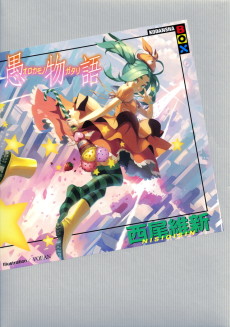 NOVEL ComedyOrokamonogatari
NOVEL ComedyOrokamonogatari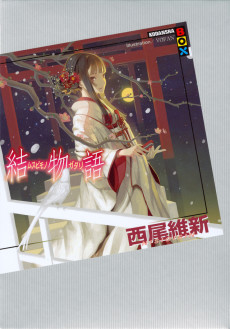 NOVEL ComedyMusubimonogatari
NOVEL ComedyMusubimonogatari
SCORE
- (3.55/5)
MORE INFO
Ended inMay 20, 2013
Favorited by 34 Users



